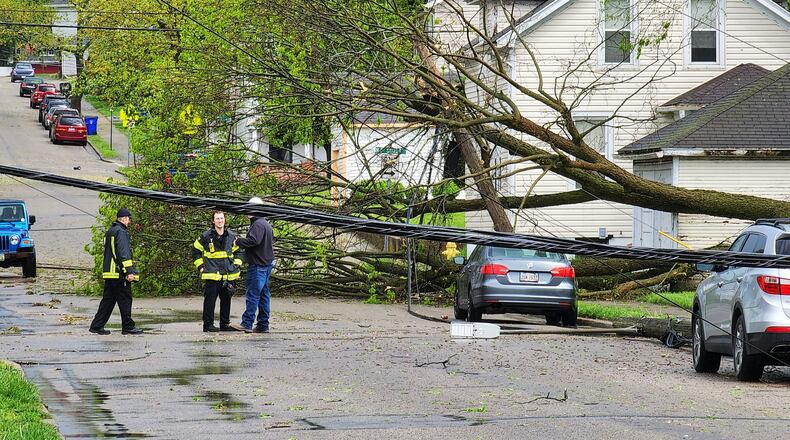Dr. Anand Persad’s, director of ACRT Services Inc. Division of Research Science and Innovation, and his team have studied tree biomechanics over the past three decades to better understand how trees grow and how changes in climate affect their growth. The results of the study are expected to show best practices of maintaining trees near powerlines, which in turn have the potential to save utilities and customers money.
“Managing urban forests for climate change is a complex process that requires a comprehensive understanding of the forest’s ecology,” Persad said.
The city of Hamilton already has few power outages compared to the national average of similar-sized electric utilities. According to the American Public Power Association, the average length of a citywide outage was 68 minutes in 2021, earning the city a Certificate of Excellence in Reliability, which recognizes the top 25% of nationally reported reliability metrics, like the average duration and frequency of service interruptions.
Though citywide outages lasted more than an hour, the average outage for an individual Hamilton resident was 52 minutes.
Similarly sized utilities across the country were almost three times higher than Hamilton, averaging 153 minutes per outage, according to the APPA.
For at least the next five years, Persad and his team will research the trees in Hamilton, and from Aug. 1 to 5. Researchers from around Ohio will collect an initial data set in Hamilton for the project. They’ll dig root samples, perform stress tests on tree branches, identify trees within the sample area, and other ecological research methods.
“We are excited to be able to be on the cutting edge with research like this,” said Hamilton Municipal Arborist Dave Bienemann. “These field trials may benefit utility and urban forestry planning across the globe.”
There will be other Ohio sites joining the study, as well as in California and Puerto Rico. Internationally, the study will be conducted in Trinidad, Mexico, and Costa Rica.
Volunteers are encouraged to participate in the project. No experience is needed, and volunteers are requested to work two-hour blocks of time. If anyone is interested, contact Bienemann at 513-785-7556 or dave.bieneman@hamilton-oh.gov by no later than Friday.
About the Author

